Associate Editor
- FMA
- The Fabricator
- FABTECH
- Canadian Metalworking
A Health and Safety Guide to Welding
CCOHS expert weighs in on common safety concerns for welders
- By Lindsay Luminoso
- June 30, 2020
- Article
- Welding
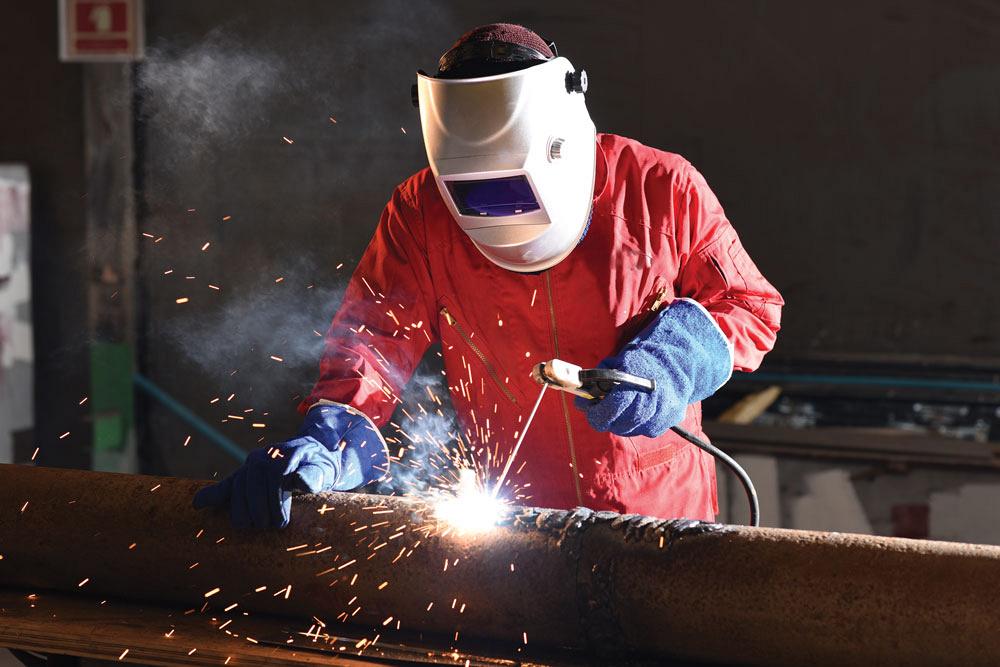
During the process, welders should be aware of hot surfaces to prevent burns. This is especially important for welders when they are wearing protective gear because they may not realize how close they are to that hot surface, which can be problematic.
Welders work at many types of workplaces, from large shops with lots of employees to tight on-site spots with just enough space for one person. Each workplace is unique, which means there is no way to predict all of the possible hazards that welders may encounter. Regardless of the workplace, there are common hazards and best practices that all welders should be aware of.
Before Welding
It’s important to examine all hazards before starting on any job. Is appropriate equipment available, especially as it relates to jigs, jacks, and fixtures holding the workpiece? Is that equipment in good working order? It’s necessary to check all aspects of ancillary equipment, not just the standard welding equipment.
"Welders should also look for any sharp metal edges that can cause cuts that may need to be deburred in advance," said Janet Mannella, vice-president, operations, Canadian Centre for Occupational Health and Safety (CCOHS). "It’s also important to assess if there could be any injuries from other equipment from within the workspace, whether there are grinders, chippers, or drills in the vicinity that can be moved or secured."
Fire also is a big concern during the welding process. Sparks from welding can potentially come in contact with objects in the workspace.
"Welders should certainly make sure that there are no combustibles in or around the area," said Mannella. "But they should also be aware of anything else that would create a potential fire hazard. Moving papers or scrap material out of this area is essential."
During Welding
During the process, welders should be aware of hot surfaces to prevent burns. If a welder has worked on one part of the workpiece and then moves onto another, it’s important to keep a safe distance from the hot zone. This is especially important for welders when they are wearing protective gear because they may not realize how close they are to that hot surface, which can be problematic.
Keeping an eye out for sparks is also important as they can fly onto the welder’s personal protective equipment (PPE). Making sure that the PPE is in good working order and worn properly can prevent burn injuries from sparks, especially in the eye area. Proper PPE also reduces the risk of overexposure to loud noises and radiation.
"Ergonomics is a big part of proper welding," said Mannella. "Does the welder have the appropriate personal protective equipment for the job? Typically, welders will use a respirator to control the welding fumes, a welding helmet, fire-retardant coveralls, and leather gloves. Making sure they are properly fitted and the welder can manoeuvre while staying safe is a good place to start."
Post-Weld
Mannella said that one of the big concerns with post-welding is eye strain. Welders should be wearing the proper lens in their welding helmet for the job, but after welding it can take some time for the eyes to adjust back to normal.
Welders also might experience metal fumes fever, which is similar to the flu, the symptoms of which sometimes come on right after welding.
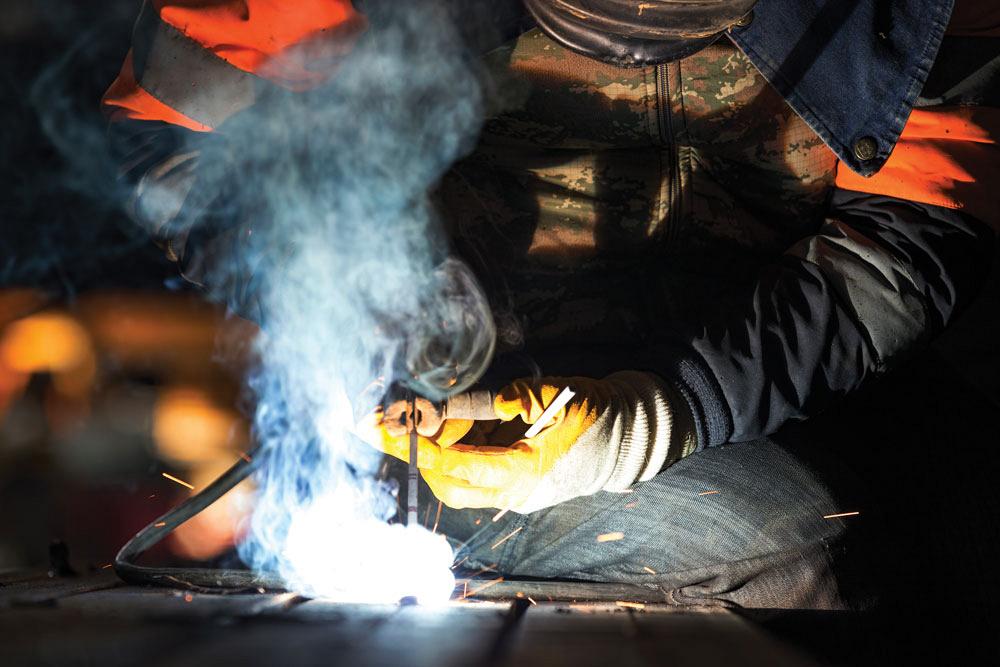
Arc welding uses electricity to generate heat to join the materials together. This welding process generates a higher temperature than gas welding and produces a stronger joint.
"This is more commonly seen after the welder has spent some time away from the job, like having the weekend away," said Mannella. "Now the welder is coming back to work and introducing himself back into the environment, which can bring on the symptoms. They don’t generally last long but can make welders feel unwell. We also want to make sure there is no irritation to the throat and lungs because the gas and fine particles of the welding fume can create dryness in the throat."
Beyond assessing the health and safety of the welder, it’s important to clean up the work environment. Workers should keep an eye out for any fire that may break out. The equipment should be returned and checked that it is still in good working condition.
Long-term Concerns
Respiratory tract infections, pneumoconiosis, hearing loss, and some central nervous system conditions are all potential health risks associated with welding. Properly fitted PPE will help reduce or eliminate these risks.
Latent skin and eye damage can be attributed to exposure to the intense visible ultraviolet and infrared radiation that can be emitted when welding as well as gamma or X-rays that are emitted during the welding inspection phase. Wearing a welding helmet with the correctly rated lens for the application can help reduce the risk of damage.
Arc Versus Gas Welding Hazards
Arc welding uses electricity to generate heat to join the materials together. This welding process generates a higher temperature than gas welding and produces a stronger joint.
"This type of welding uses a consumable electrode combined with a filler material," said Mannella. "So a risk associated with it would be a high explosion due to voltage because it uses electricity versus gas. The heat can be intense from this particular type of welding. There’s also the risk of ultraviolet and radiation damage."
Alternatively, gas welding uses fuel gases like acetylene, hydrogen, or argon to generate heat, but it’s at a lower temperature than an electric arc. Gas welding generally is used for smaller welds that don’t require a strong joint.
"There is still a risk of explosion because of the high pressure of the gas in the compressed tanks," said Mannella. "So it’s a little bit of a different hazard than with arc welding. There also is the risk of chemical misuse because the gases are in a compressed state. If not handled properly, compressed gas cylinders can explode and can cross quite a distance in the work environment."
Common Hazards
Chemical. When dealing with gas, there is the risk of exposure to the welding fumes or an explosion.
"Part of limiting the risk is having a proper training program in place to ensure that welders know how to use the gas and how to hook it up to the machines," said Mannella. "They should also be aware of WHMIS regulations or any other chemical handling parameters."
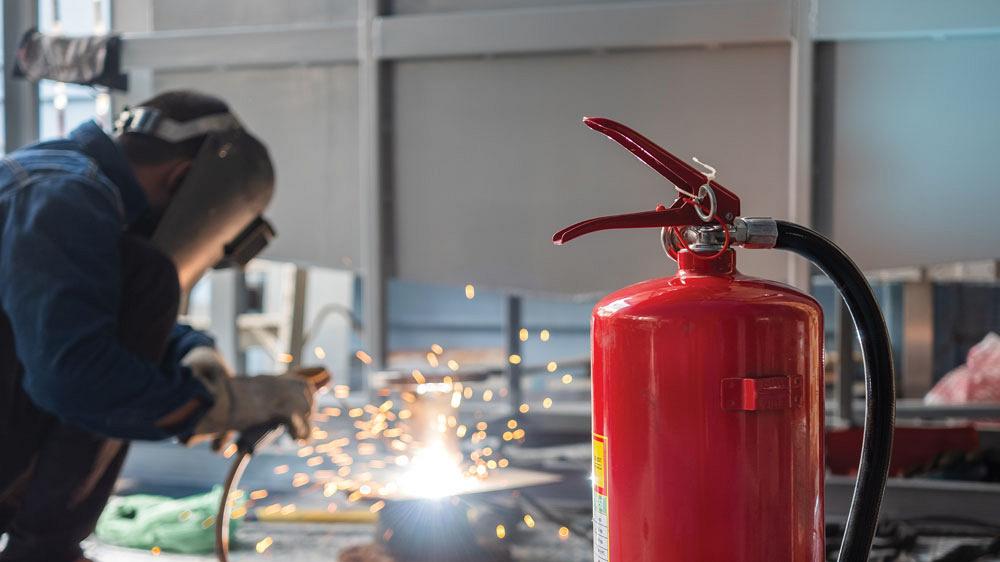
Fire is a big concern during the welding process. Sparks from welding can potentially come in contact with objects in the workspace.
Electrical. Any sort of electrical hazard can lead to electric shock. In welding, the welder can use a single phase, which is 120 volts, or a triple phase, which is 575 volts.
"That’s a lot of electricity," said Mannella. "So it’s really important that the welders know how to handle the equipment from an electrical standpoint. They need to know the proper step of plugging the welder into a 575-volt outlet. Some people may not know the importance of that step."
Mannella added that it’s important to check that no conductors are nearby when welding. If it’s raining outside, they should make sure the door is closed. If water is present, they need to clean it up before continuing.
Ergonomic. This can be a substantial hazard for welders, who are prone to repetitive strain injuries from having to lift heavy loads and be in awkward body positions.
"A lot of times welders are either kneeling, squatting, or lying on their back and welding upwards," said Mannella. "So they are stuck in that position for quite a long period of time. When you’re in a static position, you don’t get the blood flow moving to the body. So it creates a lot of pains and strains. So making sure that welders have ergonomic tools or looking at ways to bring the welding piece up from the floor to allow the welder to stand as opposed to kneeling and squatting can be helpful."
If welders are experiencing symptoms, it’s important for them to identify the issue with their supervisor.
Noise and Vibration. In addition to protecting welders from excessive noise, proper PPE also protects them from vibration.
"If a welder is working on a component that will require grinding afterwards, its beneficial to have a second operator come in to perform the grinding tasks to limit the amount of vibration each worker is exposed to," said Mannella.
Risk Assessment
Habits change all the time in the workspace, so it’s important that employers and workers be conscious of the safety hazards at all times. One way to do this is to start with a risk assessment to find out what the hazards of the work are.
"Once hazards are identified, the shop and workers can create corrective action measures to eliminate, substitute, or place an engineering control on the hazard," said Mannella. "On top of that, there should be a daily pre-start checklist with all of the risk assessment components included. That should be performed daily by the worker."
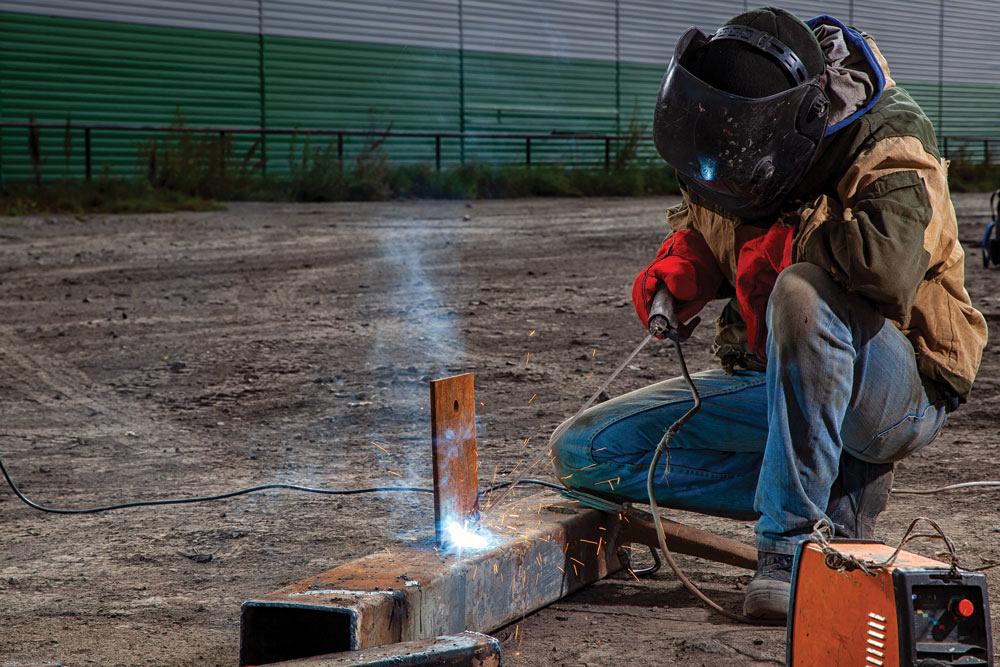
Poor ergonomics can be a really big hazard for welders, who are prone to repetitive strain injuries from having to lift heavy loads and be in awkward body positions like kneeling or crouching.
New equipment and changes in the environment happen every day. Mannella gave the example of working with a new metal alloy; this requires a new risk assessment. Daily assessments should be performed before turning on any equipment to determine if there’s any fault or equipment failure that needs maintenance. Any concerns should be identified and inspected before the welder actually turns on the equipment.
"Training is a really big component of a comprehensive health and safety program," said Mannella. "Training on the hazards that the worker is exposed to and how to correct them will help mitigate risks as well as identify areas of concern in a risk assessment. It will also help workers understand the tools and resources needed to stay safe in the working environment."
Current Health Challenge
With COVID-19, welders, and all workers, should take extra care when it comes to their health and safety.
"The most important thing is to follow the advice that’s being provided from the Public Health Agency of Canada, as well as safety associations like CCOHS," said Mannella. "We have a lot of new guidance documents out there that take that scientific information from the public health agencies and put a safety lens on it, as a guidance document to help shops navigate."
Having daily discussions between the workers and employers can help alleviate any concerns. Total transparency is needed to best navigate the COVID-19 pandemic.
"Workers should receive a health check when coming into work, not just temperature. They should be asked comprehensive questions about signs and symptoms or if they have been in contact with anyone," said Mannella.
While maintaining the distance is challenging in these environments, things can be done in the welding workspace that can help. Setting up boundaries or light curtains to prevent other workers from coming in is not uncommon in the welding zone and can be replicated all over the shop to help with traffic.
"Also, stagger breaks and lunch so there’s an opportunity to have less people in those spaces with physical distancing," said Mannella. "Employers should also make sure that there are adequate washing facilities for workers to wash their hands on a regular basis as well as sanitize the work environment for commonly touched surfaces. Being clear and transparent with protocols will better help workers reduce the risk of their workers being impacted by COVID-19."
Associate Editor Lindsay Luminoso can be reached at lluminoso@canadianfabweld.com.
Canadian Centre for Occupational Health and Safety, www.ccohs.ca
About the Author

Lindsay Luminoso
1154 Warden Avenue
Toronto, M1R 0A1 Canada
Lindsay Luminoso, associate editor, contributes to both Canadian Metalworking and Canadian Fabricating & Welding. She worked as an associate editor/web editor, at Canadian Metalworking from 2014-2016 and was most recently an associate editor at Design Engineering.
Luminoso has a bachelor of arts from Carleton University, a bachelor of education from Ottawa University, and a graduate certificate in book, magazine, and digital publishing from Centennial College.
subscribe now


Keep up to date with the latest news, events, and technology for all things metal from our pair of monthly magazines written specifically for Canadian manufacturers!
Start Your Free Subscription- Trending Articles
CWB Group launches full-cycle assessment and training program

Achieving success with mechanized plasma cutting

3D laser tube cutting system available in 3, 4, or 5 kW

Brushless copper tubing cutter adjusts to ODs up to 2-1/8 in.

Welding system features four advanced MIG/MAG WeldModes
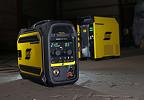
- Industry Events
MME Winnipeg
- April 30, 2024
- Winnipeg, ON Canada
CTMA Economic Uncertainty: Helping You Navigate Windsor Seminar
- April 30, 2024
- Windsor, ON Canada
CTMA Economic Uncertainty: Helping You Navigate Kitchener Seminar
- May 2, 2024
- Kitchener, ON Canada
Automate 2024
- May 6 - 9, 2024
- Chicago, IL
ANCA Open House
- May 7 - 8, 2024
- Wixom, MI















